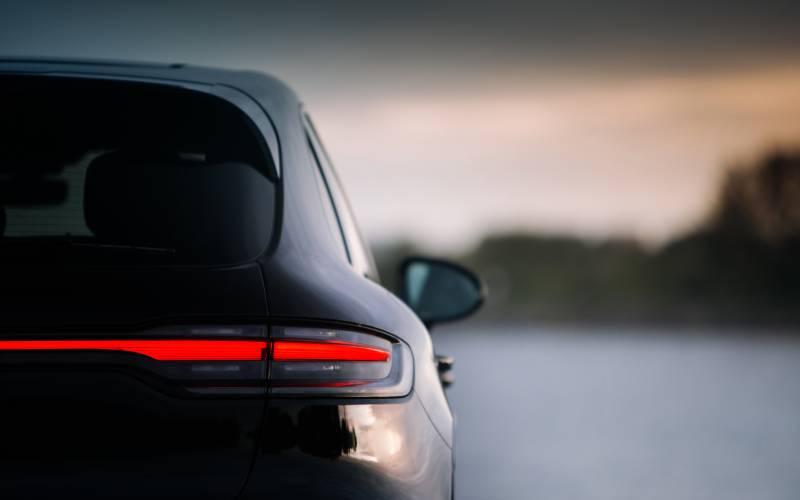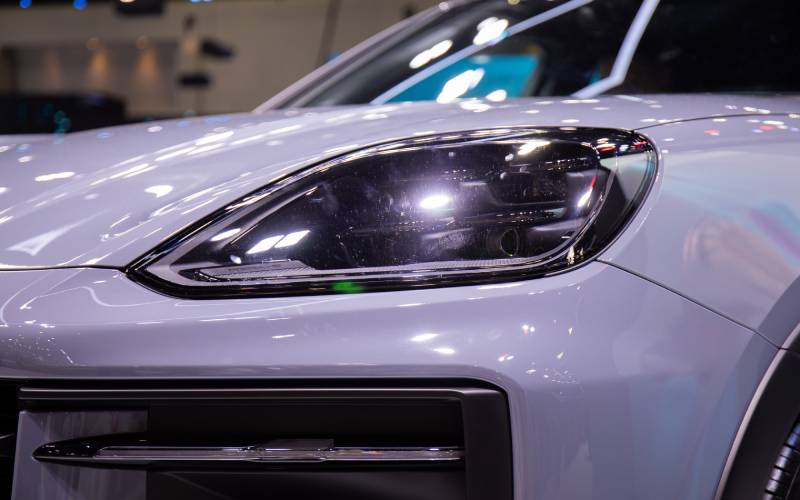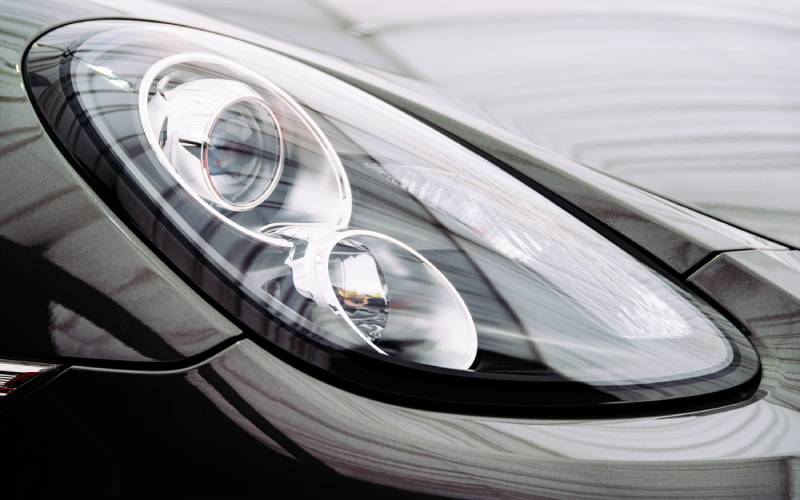How Porsche’s Dual-Clutch PDK Transmission Works

Few things elevate the driving experience like the seamless precision of Porsche's PDK transmission. It's a marvel of modern engineering, perfectly marrying performance and efficiency. For those who crave an intimate connection with their car and demand peak performance, the PDK dual-clutch transmission has become a symbol of technological brilliance.
But how does this innovative transmission operate? We explain all of that in detail as we break down how Porsche’s dual-clutch PDK transmission works, its evolution from its introduction to today, and its advantages over conventional systems.
What the Porsche PDK Transmission Means
Porsche introduced the world to the Porsche Doppelkupplungsgetriebe transmission in the 1980s for its racing prototypes. "Doppelkupplungsgetriebe" translates directly to "dual-clutch transmission" in German, and while the concept may sound complex, its intent is straightforward. PDK brings together the best of two worlds: it combines the excitement of manual gear changes with the effortless ease of an automatic system.
It wasn’t until the 21st century, in the 2009 Porsche 911 Carrera, that the PDK became available in production cars. Today, many laud it as the gold standard in high-performance vehicle transmissions, thanks to its seamless shifts, rapid gear changes, and ability to maximize a car’s capabilities while minimizing driver effort.
Understanding the Basics of a Dual-Clutch Transmission
Basically, the PDK is an advanced version of any dual-clutch transmission. But how does it operate?

The PDK Transmission, Explained
At its core, a dual-clutch transmission (DCT) operates with two independent clutches working in harmony. Unlike single-clutch manual or automatic transmissions, which rely on one clutch to handle all gear changes, the DCT splits the workload. One clutch manages the odd-numbered gears, while the other handles the even-numbered gears.
Seamless Power Delivery
This division of responsibilities allows shifts to occur without any interruption in the flow of power. Practically, it’s like driving a manual car where the next gear is instantly ready before disengaging the previous one. For the PDK, this process happens in milliseconds, making gear changes so smooth they’re nearly imperceptible to the driver.
Speed and Precision Combined
It’s not just about speed—precision plays a critical role too. PDK anticipates the next logical gear based on your driving pattern, whether you’re cruising along a highway or tackling a demanding race circuit. This intelligent system ensures that the transmission is always one step ahead, adapting in real-time to deliver optimal performance.
The Evolution of PDK: From Concept to Reality
Now that we know how Porsche’s dual-clutch PDK transmission works let’s take a brief look at its history. Like many high-performance innovations, the PDK originated as a tool to help Porsche’s competitive race cars.
The PDK’s Motorsport Origins
Porsche began experimenting with dual-clutch technology in the 1980s as part of its motorsport efforts. The original PDK system made its debut in race cars like the Porsche 956 and 962 Group C models.
It provided lightning-fast gear shifts and improved efficiency on the track, setting a new standard for racing technology. However, it would be a while until Porsche could rework these highly complex and expensive racing transmissions for use in production road cars.
Adapting PDK for Road Cars
Over the following decades, advancements in electronic control systems and drivetrain design allowed Porsche to adapt dual-clutch technology for production vehicles. In 2009, Porsche finally equipped its first road cars with the PDK system. This system offered two major benefits for drivers: the thrilling engagement of a manual transmission without the limitations of manual operation.
Refining PDK Across the Porsche Lineup
Since its introduction, Porsche has continually improved its PDK system. Today, it features in nearly every model across the lineup, from the sporty Boxster and Cayman to the legendary 911. This evolution has made PDK a defining aspect of Porsche’s performance and driving experience.
Advantages Over Traditional Transmission Systems
We’ve briefly touched on it, but now let’s go in-depth on what makes the PDK such a better transmission for high-performance cars than other systems. Primarily, the PDK offers faster and smoother gear changes for a more efficient and proactive driving experience.
Faster Gear Changes
The PDK transmission stands out for its impressive speed, delivering virtually instantaneous gear shifts that redefine driving performance. Unlike manual transmissions or traditional automatic transmissions, PDK eliminates hesitation.
With its dual-clutch system, it’s always one step ahead, ensuring seamless transitions that not only enhance acceleration but also provide an exceptionally smooth driving experience. Whether you're navigating city traffic or pushing the limits on a racetrack, the PDK ensures you’re always in the optimal gear without delay.
Optimized Driving Efficiency
The PDK enhances efficiency through algorithms that anticipate your driving behavior. This system adapts to your needs in real-time, whether it’s optimizing fuel consumption during relaxed cruising or delivering peak performance when you need it most.
By maintaining this balance, PDK reduces unnecessary fuel consumption, a challenge that manual systems often struggle to meet consistently due to human error or inefficiencies. The transmission's ability to shift gears at the ideal moment ensures that you get the best of both worlds: thrilling performance and practical efficiency for everyday driving.
Enhanced Durability
Durability is one of the PDK’s most remarkable qualities, ensuring it can withstand the demands of everyday use and high-performance conditions. The dual-clutch design splits the workload between two clutches, significantly reducing wear and tear on each one. This extends the lifespan of the transmission and enhances its reliability over time.
The innovative design also keeps the gearbox cool, even under intense pressure, such as during long drives or high-speed racing. This efficient temperature management maintains peak performance and reduces the likelihood of overheating, a common issue in traditional setups.

Maintenance and Care Tips for PDK
While the PDK is highly durable and efficient, it’s not invulnerable. Drivers should still take care of their Porsche's dual-clutch system by routine servicing, fluid changes, and careful driving.
Routine Servicing is Key
Like any transmission system, regular servicing by certified technicians is essential to maintain the PDK’s long-term performance. Proper servicing ensures the system’s precision and helps prevent potential issues down the road.
Perform Regular Fluid Changes
Porsche recommends regular fluid changes for the PDK gearbox. These special lubricants minimize friction and ensure seamless power delivery, so keeping them fresh is crucial for optimal performance.
Driving Habits Matter
Adopting good driving habits can extend the life of your PDK system. Avoid excessively high RPM launches and limit frequent stop-and-go driving, as these place unnecessary stress on the gearbox components over time.
Seek Expert Repairs
When you need repairs, always rely on technicians familiar with Porsche's distinctive systems. Generalized knowledge won’t suffice for the sophisticated design of the PDK system, so choose experts who truly understand it.
Shop Clutch Masters for Special Clutch and Transmission Parts
We hope you’ve enjoyed our explainer of the PDK transmission and all it has to offer drivers. At Clutch Masters, we’re intimately familiar with every kind of transmission, from advanced dual-clutch automatic transmissions to simple single-clutch manuals and everything in between.
Our extensive inventory of clutch components and kits includes twin-disc clutch parts, hydraulic kits, and much more. Whatever your high-performance car needs for its clutch or transmission, you’re likely to find it at Clutch Masters. View our selection online or contact our staff to speak with a clutch expert today.


